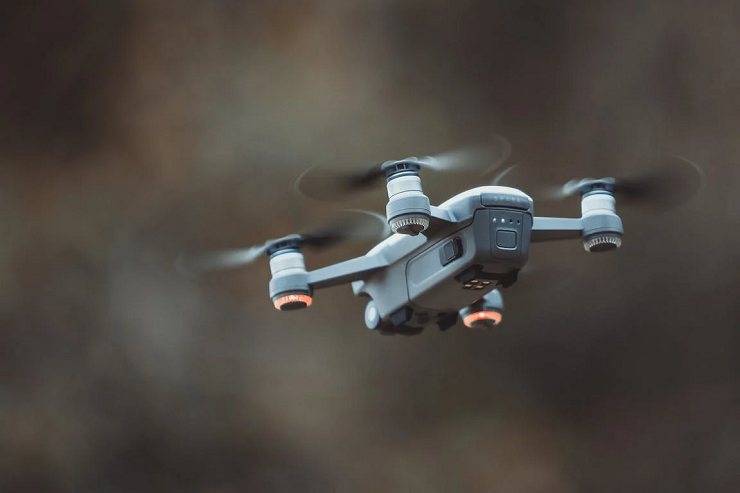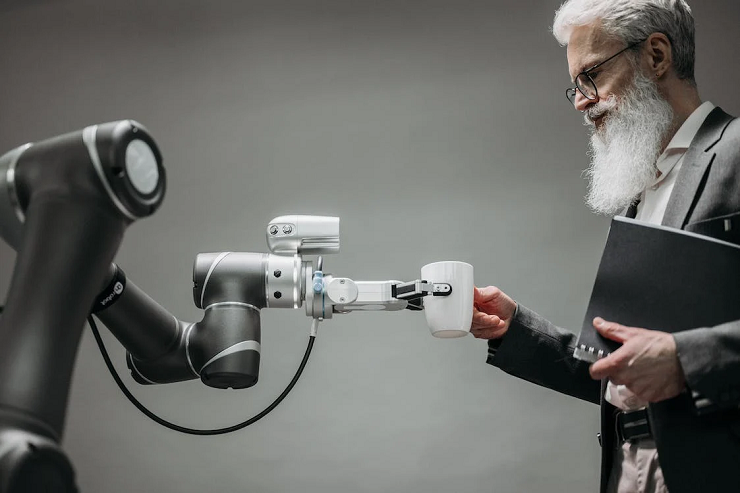
Artificial Intelligence (AI) has transformed various industries, and one of the most intriguing applications is developing autonomous systems. Self-driving cars, drones, and robotics are revolutionizing transportation and automation. These AI-driven technologies offer the potential for increased safety, efficiency, and convenience. However, their rapid development raises questions about ethical considerations, legal frameworks, and the impact on the job market. This blog explores the current state of AI autonomy in self-driving cars, drones, and robotics and the implications and challenges associated with their widespread adoption.
Self-Driving Cars: The Road To Autonomy
Self-driving cars have significantly progressed in recent years. Advanced sensors, machine learning algorithms, and vast amounts of data enable these vehicles to navigate roads autonomously. Companies like Tesla, Waymo, and Uber are at the forefront of developing self-driving technology. Autonomous vehicles have the potential to enhance road safety, reduce congestion, and provide mobility solutions for people with limited access to transportation. However, challenges persist, such as ensuring the technology’s reliability, addressing legal and regulatory barriers, and building public trust in the safety of self-driving cars.
Drones: Taking The Skies
Uncrewed aerial vehicles, or drones, are transforming e-commerce, agriculture, and surveillance industries. These flying robots equipped with AI systems offer efficient and cost-effective solutions. Drones can monitor crops, deliver packages, and assist in search and rescue operations. The development of AI algorithms has improved their navigation, object detection, and collision avoidance capabilities. Nevertheless, concerns over privacy, airspace regulations, and safety remain key obstacles to overcome. Striking the right balance between innovation and regulation is crucial to unlocking the full potential of drones.

Robotics: Automation Beyond Imagination
AI-driven robotics is revolutionizing automation in industries ranging from manufacturing and healthcare to logistics and hospitality. Robots are being developed to perform complex tasks with human-like dexterity, adaptability, and problem-solving abilities. Collaborative robots, ChatGPT or cobots, are designed to work alongside humans, increasing productivity and safety in shared workspaces. However, the rise of robotics raises concerns about job displacement and the need for reskilling the workforce. Ensuring responsible AI deployment, transparent decision-making processes and clear human-robot collaboration protocols will be vital for the future of robotics.
Implications And Challenges
While the development of self-driving cars, drones, and robotics brings numerous benefits, it also presents significant implications and challenges that must be addressed.
1. Ethical Considerations
AI autonomy raises ethical concerns, especially in critical situations where AI systems must make decisions. For example, self-driving cars may face dilemmas where they must choose between two potentially harmful outcomes. Resolving these ethical dilemmas requires careful consideration and programming moral principles into AI algorithms.
2. Legal And Regulatory Frameworks
The widespread adoption of autonomous technologies necessitates the establishment of robust legal and regulatory frameworks. Laws must be updated to address issues such as liability in accidents involving autonomous vehicles or drones. Governments must collaborate with technology developers to ensure public safety, data privacy, and responsible deployment of these technologies.

3. Public Trust And Acceptance
Building public trust in AI autonomy is crucial for successfully integrating into society. Demonstrating the safety and reliability of self-driving cars, drones, and robotics through rigorous testing and transparent communication is essential. Education and awareness campaigns can help address misconceptions and fears associated with AI autonomy.
4. Job Displacement And Workforce Transition
Automating tasks previously performed by humans raises concerns about job displacement. While self-driving cars, drones, and robotics create new job opportunities in their respective industries, there is a need for workforce transition and reskilling programs. Collaboration between governments, educational institutions, and enterprises is necessary to ensure that individuals are equipped with the skills required for emerging roles.
5. Cybersecurity Risks
As autonomous systems become more interconnected, cybersecurity becomes a critical consideration. Protecting these technologies from cybersecurity threats and ensuring the integrity and confidentiality of data is vital. AI algorithms and systems must be designed with robust security measures to prevent unauthorized access and potential exploitation.
6. Economic Impact
The widespread adoption of AI autonomy can disrupt industries and impact the economy. While it can increase productivity and efficiency, specific sectors heavily reliant on human labor may face challenges. Governments and organizations must proactively plan for these economic shifts, invest in reskilling programs, and create new opportunities that align with the changing technological landscape.

7. Unequal Access And Affordability
While autonomous technologies hold great promise, ensuring equal access and affordability is essential. Self-driving cars and advanced robotics may initially be costly, limiting their accessibility to certain socioeconomic groups. It is necessary to address these affordability concerns and bridge the digital divide to prevent the exacerbation of existing inequalities.
Conclusion
The development and deployment of AI autonomy in self-driving cars, drones, and robotics hold great promise for the future. These technologies offer numerous benefits, including increased safety, efficiency, and convenience. However, their adoption must be accompanied by robust legal frameworks, ethical guidelines, and public trust. The challenges associated with AI autonomy must be carefully managed to ensure that the benefits outweigh the risks. By embracing innovation, addressing ethical concerns, and fostering collaboration between technology developers, policymakers, and society, we can shape a future where AI autonomy contributes positively to our lives.
Also Read: The Future Of Generative AI Is Active Learning; Here’s How To Use It
